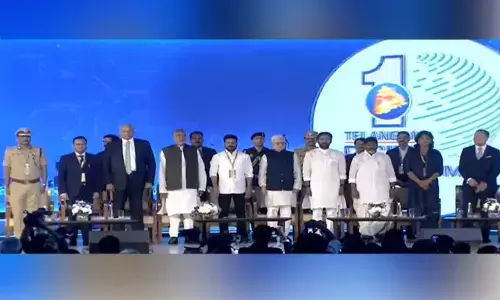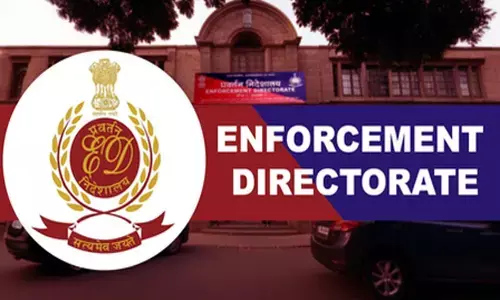‘Deprive and rule’ is as ominous as ‘divide and rule’

The British used the twin weapons of ‘divide and rule’ and ‘deprive and rule’ to enslave and exploit us for decades.
The British used the twin weapons of ‘divide and rule’ and ‘deprive and rule’ to enslave and exploit us for decades. Post-Independence, we adopted a democratic and inclusive policy ecosystem and achieved remarkable progress on multiple fronts. From poverty eradication, improving connectivity, putting in place better health and education facilities to creating world-class public-sector undertakings, our progress as a nation has been incredible. Today the country is on its way to becoming the world’s third largest economy.
However, we were never aggressive enough in expanding and implementing affirmative measures to achieve fast-paced all-round inclusive socio-economic development, ensuring empowerment and well-being of all irrespective of their caste, religion and region.
The inherent disdain for the have-nots among us, largely because of the overt and covert institutionalisation of caste and religion-based discrimination and exclusion, further widened the gaps between the rich and the poor comprising social groups, which are socially and educationally backward. A majority of lands, job opportunities, facilities for quality education and healthcare remained the fiefdom for a miniscule percentage of people among us. As a result, affirmative initiatives also became a tool for votes, and not a means to achieve the desired goals of inclusive development and equitable distribution of national opportunities, facilities and resources among all in proportion to their population. It is certainly an unfortunate situation that could not be avoided.
Resultantly, economic disparities continued to widen and the worst victims were those classified as Scheduled Tribes (STs). Notwithstanding the fact that they represent a diverse and culturally rich segment of the population, comprising numerous communities with unique languages, traditions and lifestyles, they were subject to hardships and suffered multiple deprivations, exploitation and exclusion. They lost their rights over forests and their resources, and were left to face social and economic challenges on their own. Their forefathers made supreme sacrifices in the freedom struggle but they did not see a remarkable progress in their lives in commensurate with their colossal contributions in retaining India’s great cultural legacy.
The situation improved a lot after liberalization was adopted in 1991, which saw an increase in job opportunities in the unorganized sector. Spread across various regions, including hilly and forested areas, successive governments’ implemented affirmative measures to address historical injustices and promote the overall development of STs with reservation in education, employment and political representation. However, despite these efforts, many ST communities continue to grapple with issues such as land rights, displacement, and limited access to essential services. Uplift of their socio-economic remains a crucial component in India’s pursuit of inclusive and equitable development did never get adequate attention from the powers-that-be irrespective of their hue.
As a result, developmental anomalies continue to be a major concern for the policy makers. The plight of tribals – who account for 8.6 per cent of the country’s population as per the Census 2011 report – needs to be addressed on a priority basis.
The Viksit Bharat Sankalp Yatra, which was flagged by Prime Minister Narendra Modi on November 15, aims at attaining saturation of flagship schemes by ensuring that their benefits reach all targeted beneficiaries in a time-bound manner. The focus of Viksit Bharat Sankalp Yatrawill be on reaching out to people, creating awareness and providing benefits of welfare schemes like sanitation facilities, essential financial services, electricity connections, access to LPG cylinders, housing for the poor, food security, proper nutrition, reliable healthcare and clean drinking water, among others. Under the PM JANMAN or PM Janjati Adivasi NyayaMahaAbhiyan, the government intends to reach out to tribal groups and primitive tribes, many of who still dwell in forests. The government has identified 75 such tribal communities and primitive tribes with a population in lakhs, who reside in more than 22,000 villages.
The Central government has earmarked Rs. 24,000 crore for this mega campaign. Every initiative to empower our tribal people matters a lot as the development of tribal populations is a multifaceted process that involves addressing various social, economic and cultural dimensions. Historically, tribal communities have often faced marginalisation, resulting in limited access to education, healthcare, and economic opportunities. Initiatives aimed at improving education infrastructure, providing skill development opportunities and ensuring healthcare accessibility have been pivotal in narrowing the development gap.
The Union Ministry of Tribal Affairs in a statement on February 1 said that a total of 38,000 teachers and support staff will be recruited for Eklavya Model Residential Schools (EMRS), which will benefit 3.5 lakh tribal students. Similarly, Rs. 1,17,943.73 crore has been allocated to the Development Action Plan for Scheduled Tribes (DAPST). The budget allocation of the Ministry of Tribal Affairs has been substantially increased from Rs 4295.94 crore in 2013-14 to Rs 12461.88 crore in 2023-24, that is an increase of around 190.01 per cent. There have been considerable improvements in socio-economic conditions of Scheduled Tribes (STs). For example, literacy rate for STs has improved from 59 per cent in 2011 to 71.6 per cent as per the Periodic Labour Force Survey (PLFS) report (July 2020 - June 2021), bringing down the gap between overall and ST literacy from 14 per cent between 2001 and 2011 to 7.5 per cent between 2011 and 2021.
The Gross Enrolment Ratio (GER) at upper primary level has improved from 91.3 (2013-14) to 98 (2021-22). GER for ST students at the secondary level (IX-X) has increased from 70.2 (2013-14) to 78.1 (2021-22). GER for ST students at senior secondary level (XI-XII) has increased from 35.4 (2013-14) to 52 (2021-22) and GER for ST students at higher education level has increased from 13.7 (2014-15) to 18.9 (2020-21).
However, the presence of ST students in seats of higher education in the private and public sector is not up to the mark. Notwithstanding the policy of reservation, their presence is inadequate. Our efforts should be to ensure that more and more ST students are selected under the general category. The impact analysis of Pre-Matric Scholarship and Post-Matric Scholarship on the overall well-being of STs should be done in a rigorous manner, which is not happening right now. The idea should not be to look for an opportunity for self-aggrandizement in their problems but a godsend chance to empower and bring them to the mainstream.
Collaborative efforts involving tribal communities, government agencies and NGOs are crucial for creating sustainable development models that uplift tribal populations while preserving their rich heritage and traditions. Neither ‘divide and rule’ nor ‘deprive and rule’ should cast its shadow over our collective resolve to realize the goal of SabkaKaaSaath, SabkaVishwas Aur SabkaVikas during India’s Amrit Kaal.
















